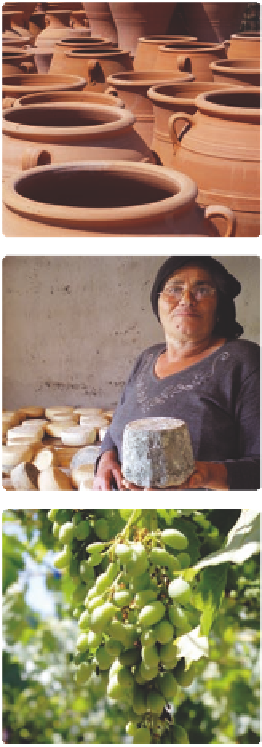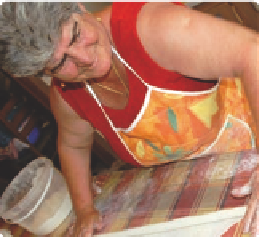Travel Reference
In-Depth Information
Caves” and a “Wine and Cheese Sunset Paddle”.
At the end of each salty, tiring but exhilarating
day, knowledgeable guides direct weary canoeists
to family-run restaurants where freshly caught
seafood and local meats are dished up alongside
liberal quantities of local wine. The bling may be
returning to Dubrovnik, but Croatia's real jewels
are still to be found out to sea.
Need to know
Bring a torch as the
electricity supply isn't always reliable.
For prices, accommodation details and
directions to Milia from Chania see
W
www.milia.gr;
T
+30 (0) 282 104
6774.
115 eaT in CreTe
Need to know
No previous experience is
necessary as tours start with training. For more
on the types of tours offered, reservations
and frequently asked questions see
W
www.
adriatickayaktours.com;
T
+385 (0) 2031 2770.
The villages of Crete's mountainous
interior are far away, in lifestyle if
not distance, from the resorts on the
island's northern coast. Here the pace
of life is determined by seasons and
harvests, and traditions remain strong:
potters still make clay jars in their
workshops and farmers still use carts to
transport produce. Life moves slowly.
If it's this side of Crete you want to
explore, you may want to indulge in a
gastronomic tour with Crete's Culinary
Sanctuaries, which takes small groups
of up to eight visitors to stay in remote
rural villages, immersing them deep
into local life. In spring guests might
harvest artichokes or fennel; in summer
you'll see beekeeping and winemaking
techniques; in winter the olive harvest
dominates island life. Tours of wineries,
olive oil presses and traditional
bakeries are usually included, plus on
some of the tours there are cooking
classes.
Guests stay in simple rural lodging,
mingling with residents, talking to
traditional farmers and fishermen,
and exploring the rugged beauty of the
countryside. It's an experience that aims to open
a window onto a world that consciously chooses
to reject some of the excesses of modern life and
instead work to its own seasonal rhythm.
114 sTay aT milia mounTain
reTreaT in CreTe
High above the Topolia gorge in the western
foothills of Crete's White Mountains, a group of
locals has breathed new life into an abandoned
settlement and transformed it into one of the
island's most innovative places to stay.
The success of Milia Mountain Retreat is due
largely to its simplicity. Thirteen guesthouses
have been restored from the foundations of
derelict buildings, using traditional methods
that incorporate local stone and chestnut wood.
The furnishings have been bought in from the
surrounding villages and at night the only light
is provided by candles. Spring water is piped in,
bread is baked in wood-fired ovens, and the farm
produces most of the ingredients needed for the
local dishes served up in Milia's restaurant, such
as potato, chestnut and onion stew.
The retreat is surrounded by over a square
kilometre of land, so there are plenty of
footpaths that lead into the hills if you want
to work up an appetite for dinner. Further
afield there's a sandy beach at Elafonissi and
Byzantine churches at Kandanos. Weather
permitting, there's a small spring-fed pool to dip
into when you return from your excursions - a
reminder that the simple pleasures in life can be
among the best.
Cretan life: traditional clay
jars are still made and used
to store goods; local cheese;
wine in waiting; baking the
traditional way
Need to know
For details, dates and prices of
itineraries, as well as sample recipes, see
W
www.
cookingincrete.com.























Search WWH ::

Custom Search